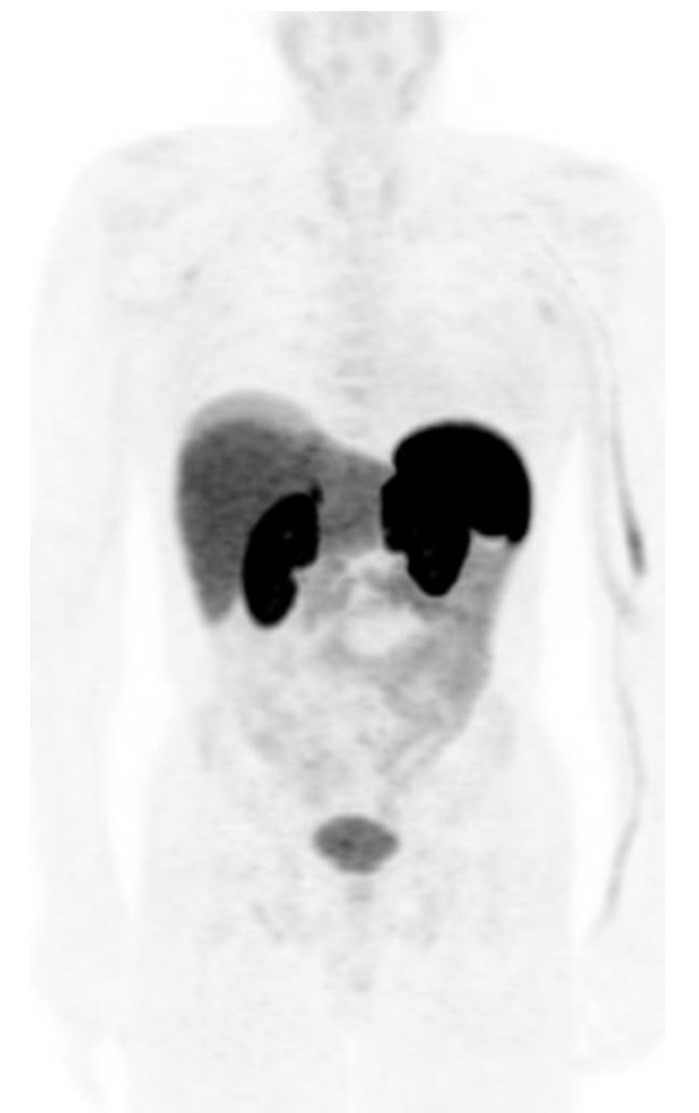Tuesday Poster Session
Category: Small Intestine
P4986 - My Gut Hurts: Thrombotic Microangiopathy or Pheochromocytoma?
Tuesday, October 29, 2024
10:30 AM - 4:00 PM ET
Location: Exhibit Hall E

Has Audio

Ahmad Mardini, MD
Advocate Christ Medical Center
Oak Lawn, IL
Presenting Author(s)
Ahmad Mardini, MD, Suyashi Singh, MD, Krishna Shah, MD, Malik Waseem Ahmad, MD, Samee Farooqi, DO, Matthew Posen, DO, Manuel Paredes Flores, MD, Faizan Rahim, DO, Valentina Turbay-Caballero, MD, Harreth Raddawi, MD, Joumana Chaiban, MD
Advocate Christ Medical Center, Oak Lawn, IL
Introduction: Thrombotic microangiopathy is a consequence of microvascular obstruction due to platelet aggregation, endothelial injury and vessel wall thickening. Presentation depends on the organs affected. Malignant hypertension can present as thrombotic microangiopathy and warrants testing for secondary causes. We present a case of severe hypertensive thrombotic microangiopathy, elevated catecholamines and negative positron emission tomography/computed tomography DOTATATE scan.
Case Description/Methods: A 37 year old male known to have hypertension, medication nonadherence and chronic kidney disease presented with abdominal pain, vomiting and diarrhea. He had several such admissions in the past. His blood pressure was >200s/100s on arrival. Labs showed: elevated creatine, total bilirubin, lactate dehydrogenase and troponins, hypokalemia, pancytopenia, reticulocytosis, negative direct antiglobulin test, normal prothrombin time, partial thromboplastin time and fibrinogen. Electrocardiogram and echocardiogram showed left ventricle hypertrophy. Renal ultrasound showed medicorenal disease. Duplex ultrasounds of the superior mesenteric, celiac, and renal arteries, abdominal aorta and iliac artery were negative. Computerized Tomography of the abdomen/pelvis without contrast and Magnetic Resonance Imaging of the abdomen with/without contrast were negative. Disintegrin/metalloproteinase with a thrombospondin type 1 motif, member 13 (ADAMTS13) was normal. Renin and aldosterone were high. 24 hour urine metanephrine and normetanephrine were >2-3 times above normal. He received intravenous hydration. Blood pressure control was achieved with a nicardipine drip then transition to home carvedilol, nifedipine, clonidine and hydralazine. DOTATATE scan was negative for neuroendocrine tumors.
Discussion: Thrombotic microangiopathy can present as hypertensive emergency and kidney injury. Malignant hypertension can cause pressure natriuresis leading to volume depletion then compensatory renin-angiotensin-aldosterone-system activation, as evidenced by the patient's elevated renin and aldosterone. Blood pressure control and rehydration resolved his symptoms and normalized his labs. Severe hypertension and elevated catecholamines suggest pheochromocytoma. Neuroendocrine tumors may not show on Computed Tomography and Magnetic Resonance Imaging. DOTATATE scans usually have higher sensitivity but very rarely may miss neuroendocrine tumors. This case poses the question if other imaging studies can be developed to better identify them.

Disclosures:
Ahmad Mardini, MD, Suyashi Singh, MD, Krishna Shah, MD, Malik Waseem Ahmad, MD, Samee Farooqi, DO, Matthew Posen, DO, Manuel Paredes Flores, MD, Faizan Rahim, DO, Valentina Turbay-Caballero, MD, Harreth Raddawi, MD, Joumana Chaiban, MD. P4986 - My Gut Hurts: Thrombotic Microangiopathy or Pheochromocytoma?, ACG 2024 Annual Scientific Meeting Abstracts. Philadelphia, PA: American College of Gastroenterology.
Advocate Christ Medical Center, Oak Lawn, IL
Introduction: Thrombotic microangiopathy is a consequence of microvascular obstruction due to platelet aggregation, endothelial injury and vessel wall thickening. Presentation depends on the organs affected. Malignant hypertension can present as thrombotic microangiopathy and warrants testing for secondary causes. We present a case of severe hypertensive thrombotic microangiopathy, elevated catecholamines and negative positron emission tomography/computed tomography DOTATATE scan.
Case Description/Methods: A 37 year old male known to have hypertension, medication nonadherence and chronic kidney disease presented with abdominal pain, vomiting and diarrhea. He had several such admissions in the past. His blood pressure was >200s/100s on arrival. Labs showed: elevated creatine, total bilirubin, lactate dehydrogenase and troponins, hypokalemia, pancytopenia, reticulocytosis, negative direct antiglobulin test, normal prothrombin time, partial thromboplastin time and fibrinogen. Electrocardiogram and echocardiogram showed left ventricle hypertrophy. Renal ultrasound showed medicorenal disease. Duplex ultrasounds of the superior mesenteric, celiac, and renal arteries, abdominal aorta and iliac artery were negative. Computerized Tomography of the abdomen/pelvis without contrast and Magnetic Resonance Imaging of the abdomen with/without contrast were negative. Disintegrin/metalloproteinase with a thrombospondin type 1 motif, member 13 (ADAMTS13) was normal. Renin and aldosterone were high. 24 hour urine metanephrine and normetanephrine were >2-3 times above normal. He received intravenous hydration. Blood pressure control was achieved with a nicardipine drip then transition to home carvedilol, nifedipine, clonidine and hydralazine. DOTATATE scan was negative for neuroendocrine tumors.
Discussion: Thrombotic microangiopathy can present as hypertensive emergency and kidney injury. Malignant hypertension can cause pressure natriuresis leading to volume depletion then compensatory renin-angiotensin-aldosterone-system activation, as evidenced by the patient's elevated renin and aldosterone. Blood pressure control and rehydration resolved his symptoms and normalized his labs. Severe hypertension and elevated catecholamines suggest pheochromocytoma. Neuroendocrine tumors may not show on Computed Tomography and Magnetic Resonance Imaging. DOTATATE scans usually have higher sensitivity but very rarely may miss neuroendocrine tumors. This case poses the question if other imaging studies can be developed to better identify them.

Figure: No scintigraphic evidence of DOTATATE avid neuroendocrine malignancy.
Disclosures:
Ahmad Mardini indicated no relevant financial relationships.
Suyashi Singh indicated no relevant financial relationships.
Krishna Shah indicated no relevant financial relationships.
Malik Waseem Ahmad indicated no relevant financial relationships.
Samee Farooqi indicated no relevant financial relationships.
Matthew Posen indicated no relevant financial relationships.
Manuel Paredes Flores indicated no relevant financial relationships.
Faizan Rahim indicated no relevant financial relationships.
Valentina Turbay-Caballero indicated no relevant financial relationships.
Harreth Raddawi indicated no relevant financial relationships.
Joumana Chaiban indicated no relevant financial relationships.
Ahmad Mardini, MD, Suyashi Singh, MD, Krishna Shah, MD, Malik Waseem Ahmad, MD, Samee Farooqi, DO, Matthew Posen, DO, Manuel Paredes Flores, MD, Faizan Rahim, DO, Valentina Turbay-Caballero, MD, Harreth Raddawi, MD, Joumana Chaiban, MD. P4986 - My Gut Hurts: Thrombotic Microangiopathy or Pheochromocytoma?, ACG 2024 Annual Scientific Meeting Abstracts. Philadelphia, PA: American College of Gastroenterology.
